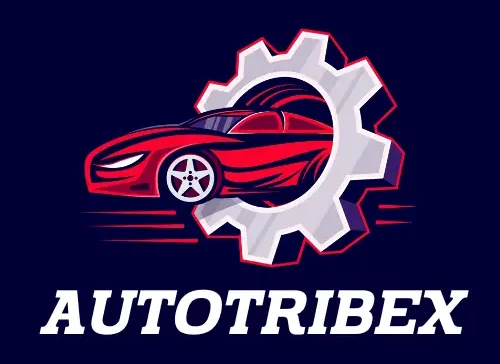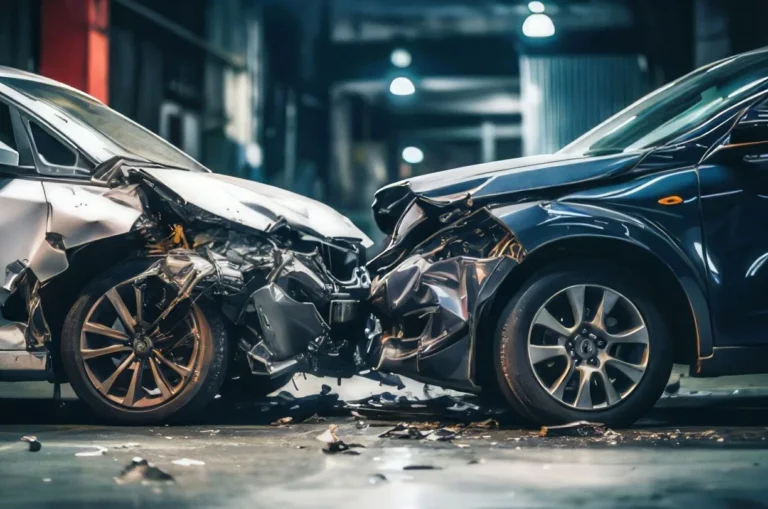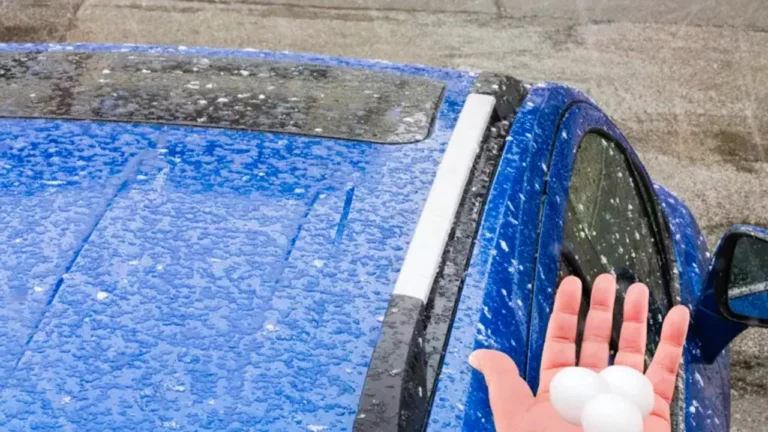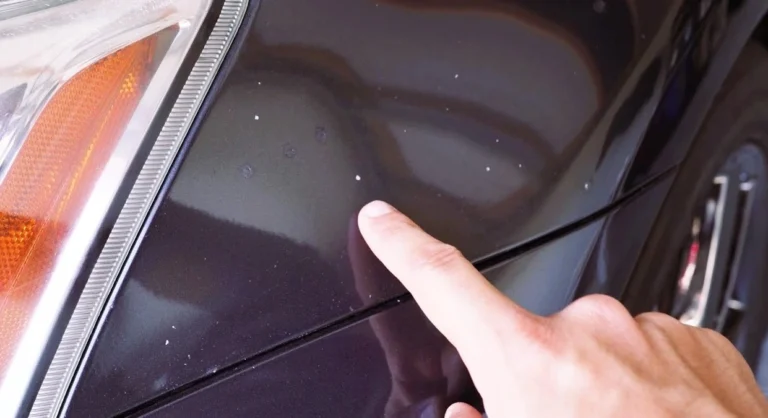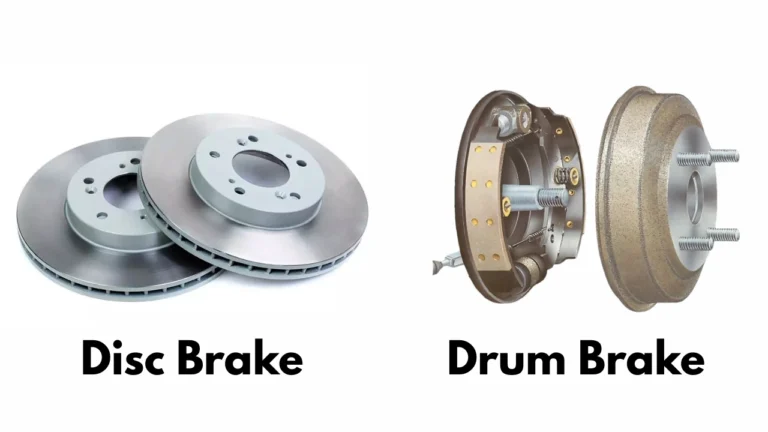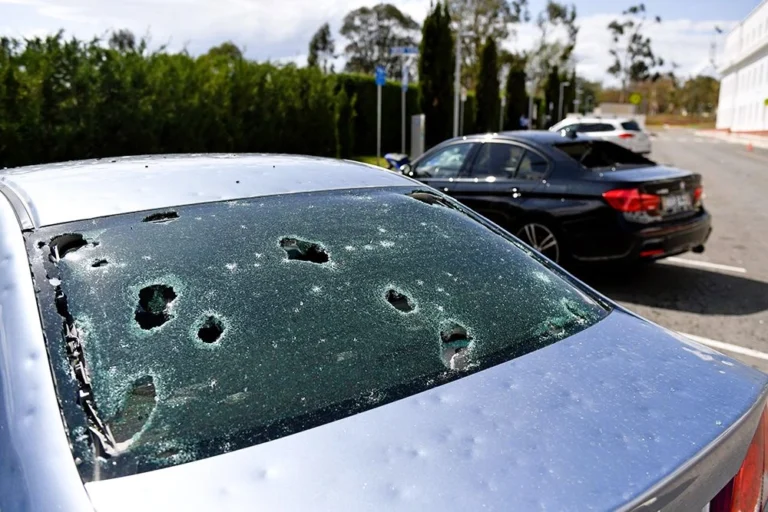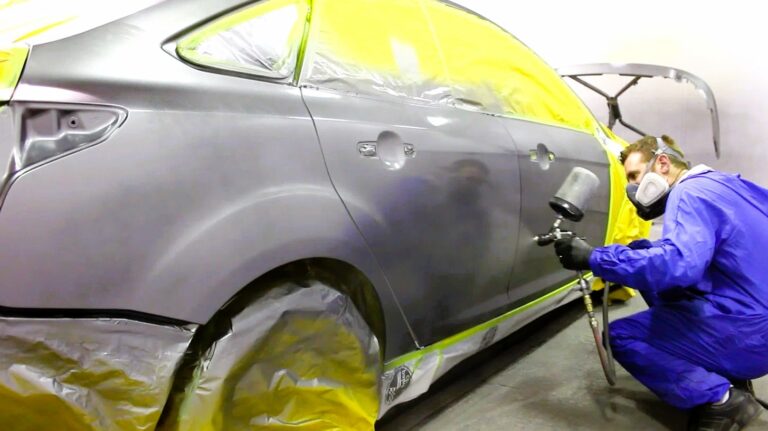Different Types of Car Scratches – How to Fix and Avoid Them?
The paint on a car serves two essential purposes by defending the body structure against rust formation and UV rays and corrosion. A scratch in the paint compromises the protective layer of the body. Every car scratch reveals a unique story about the events that caused it regardless of whether it is a shallow surface mark or a severe deep cut.
The source of car scratches includes negligent parking lot drivers as well as natural elements such as falling branches and loose gravel. No matter the source, knowing how to deal with the different types of car scratches can help you restore your car’s finish and maintain its value.
In this guide, we’ll walk you through the various types of car scratches, their causes, how to fix them using both DIY and professional methods, and ways to prevent them from happening again. Let’s help your car stay glossy, protected, and showroom-ready.
Breaking Down the Common Types of Car Scratches
The exterior of your car consists of three protective layers starting with the clear coat followed by the base coat and finishing with the primer. A scratch damages at least one layer among the clear coat base coat and primer. Clear coat scratches remain shallow enough to fix through the application of polish. Base coat scratches require touch-up paint because they become more visible to the eye.
The primer and metal beneath it become exposed when a scratch occurs so immediate treatment is needed to stop rust formation. The most frequent types of car scratches include swirl marks, scuffs, paint transfer, key marks, and deep primer scratches. Each type has a different level of severity and repair process. Understanding what you’re dealing with allows you to select the right fix and avoid making things worse with the wrong treatment.
How the Different Types of Car Scratches Happen
Accidental scratches make up only part of the damaged area affecting vehicles because everyday activities also lead to scratches. Many result from routine habits or even improper cleaning techniques. The use of unclean rough sponges in car washing tasks generates small marks on the vehicle surface. One can easily cause door dings or key marks by parking their vehicle too near other vehicles. Surface damage can appear on your car after simple brushing even with a zipper or ring.
Common causes of the different types of car scratches include:
- Minor collisions or tight parking
- Automatic car washes with abrasive brushes
- Road debris hitting the car at high speeds
- Tree branches or bushes scraping the surface
- Accidental contact with sharp objects
- Minor collisions or tight parking
Recognizing these common triggers is the first step to prevention.
How to Identify Scratch Depth Without Tools
Before you start any repair, you need to know how deep the scratch is. Run your fingernail across it. If your nail doesn’t catch, the damage is likely only on the clear coat and can be fixed with a scratch remover. If your nail catches but the scratch doesn’t expose metal, you’ll need touch-up paint and light sanding. But if you can see gray or silver underneath the paint, it’s reached the primer or body panel, and that’s when it’s time for professional help.
Understanding the depth of damage is key to planning the next step. A poor repair can make the problem worse especially with deeper scratches that may later peel, crack, or rust.
DIY Tips to Repair Types of Car Scratches at Home
Fixing your own car scratches isn’t as hard as it sounds—especially for light damage. A basic scratch repair can take less than an hour if done correctly. Start by cleaning the area thoroughly to remove any dirt or oils. Apply a scratch remover or rubbing compound using a microfiber cloth. Rub gently in circular motions, then buff and polish.For deeper scratches, you’ll need a repair kit with touch-up paint that matches your car’s color code. After applying paint in layers, sand the area lightly with 2000-grit paper, then seal it with clear coat. Finish with a final polish for smoothness and shine. This is one of the most effective methods to repair types of car scratches at home.
When to Choose a Scratch Repair Kit
Scratch repair kits are a lifesaver for car owners who want to fix minor paint damage without visiting a shop. These kits usually contain polish, sandpaper, applicator pads, and sometimes color-matched paint pens. They’re designed for shallow to mid-depth scratches, especially where the base paint is still intact.
Here’s when to use one:
- The scratch is longer than a coin but doesn’t show metal
- You can feel the scratch with your nail but it’s not peeling
- You want to avoid the cost of an auto body shop
Pro tip: Always read instructions carefully, and work in shaded areas to prevent products from drying too fast.
Professional Repairs When the Body Shop Is Best
Sometimes, scratches are too deep or too widespread to fix at home. If the scratch exposes the metal underneath or has led to rust, a professional service is the best option. An auto body shop has the tools and skills to blend paint perfectly and restore your car’s original finish. They’ll also apply a fresh clear coat and polish that’s likely to last longer than DIY products.
Professionals use techniques like wet sanding, high-speed buffing, and computerized color matching to achieve flawless results. This option is more expensive but provides peace of mind when precision is needed.
Simple Habits That Prevent Scratches
The best scratch is the one that never happens. A few simple changes in your daily habits can help prevent all kinds of paint damage. Use soft microfiber cloths and avoid drying your car with bath towels or paper products. Park away from crowded areas and avoid tree-lined streets that can drop sap or branches on your car.
You can also add protection using:
- Ceramic coatings for long-term paint defense
- Paint protection films (PPF) for high-impact zones
- Regular waxing for a hydrophobic, protective finish
These solutions add a durable barrier against many environmental threats and reduce the chances of future scratches.
How to Choose the Right Method to Repair Car Scratches
With so many options available, choosing the right scratch repair depends on several factors: the scratch depth, your budget, and the tools you’re comfortable using. If it’s a light swirl or scuff, a polishing compound is all you need. For deeper damage, touch-up paint and light sanding are required. If there’s primer or metal exposed, don’t risk it—let the professionals handle it.
Whatever method you choose, always prep the area first and use products in a shaded, dust-free environment. Consistent care now can save you thousands later.
Different Types of Car Scratches with Pictures (Explained)
Let’s break down the types of scratches found on cars, their symptoms, and how they’re best treated.
Clear Coat Scratches
The highest layer of the car’s paint job is called a clear coat; it is transparent and gives the paint a glossy finish. Additionally, it shields the paint surface from the weather, extending its lifespan. Daily wear and tear, such as dusting, cleaning, and other little scratches, is what causes scratches on the clear coat surface. When examined closely, scratches on the clear coat can be seen to resemble swirls, whorls, straight lines, and occasionally white lines when illuminated.
How to fix it
The simplest to repair, these scratches typically just need to be gently cleaned and waxed. Scratches can be removed by buffing the wax. The first dirt and grime on the surface are removed by gentle washing, and the residual water is removed by wiping with a soft microfiber cloth. Waxing is the final procedure, which must also be done extremely carefully. The car could sustain a fresh set of scratches after being pressure-buffed!

Paint Scratches (Base Coat)
Your vehicle develops paint transfer scratches when its body surface touches another painted object which results in transferred paint on your car. These scratches may appear severe but tend to be easier to repair than expected.
How to fix it:
The treatment requires professional help to protect original paintwork but specialists can use a specific rubbing chemical to remove the transferred paint. Auto body technicians use specific procedures to eliminate foreign paint while maintaining the original finish of the car.

Deep Scratches (Primer or Metal)
Deep scratches cause the worst paint damage. These cuts go past the base coat and primer often showing the bare metal underneath. If you don’t fix them, the exposed area can start to rust, which can lead to corrosion, collisions, vandalism, or hard hits from objects cause these scratches.
When you look at the scratch, you’ll see a color change or even shiny metal at the bottom. To fix deep scratches, you need to follow several steps. First, sand the area to smooth out rough edges. Then put on a layer of car primer followed by touch-up paint. After the paint dries wet sand, buff, and polish to smooth the surface and seal the repair.
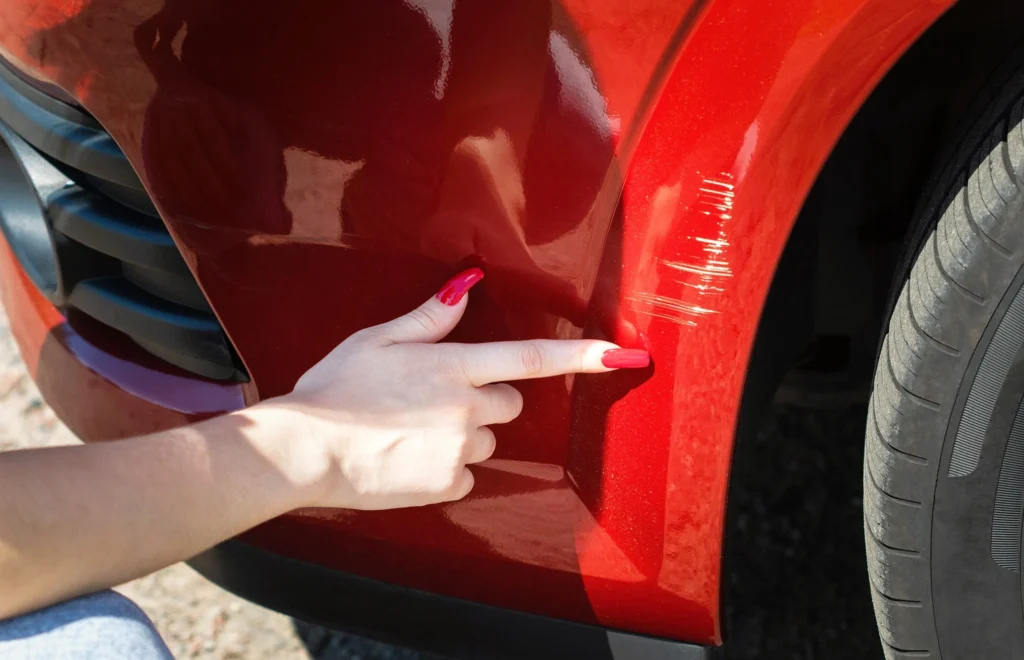
Repair Types of Car Scratches
Different scratch types require different repair approaches. Here’s a quick summary:
| Scratch Type | Depth | DIY Repair Option? | Suggested Repair Method |
|---|---|---|---|
| Clear Coat Scratch | Surface level | Yes | Polishing or Clear Coat Pen |
| Paint Scratch | Into color coat | Yes (small areas) | Touch-up Paint + Sand + Polish |
| Deep Scratch | Down to metal/primer | No (in most cases) | Professional Repainting or Kit |
Final Thoughts:
Scratches are a fact of life for car owners, but they don’t have to be permanent. With proper identification, the right tools, and some patience, most can be fixed quickly and effectively. Understanding the types of car scratches helps you act fast and choose the best repair method, whether you’re using a compound, touch-up paint, or hiring a pro. By taking simple steps like regular washing, smart parking, and using protective coatings, you can avoid dealing with the different types of car scratches altogether. Keep your car looking sharp and protect its value with consistent care.
